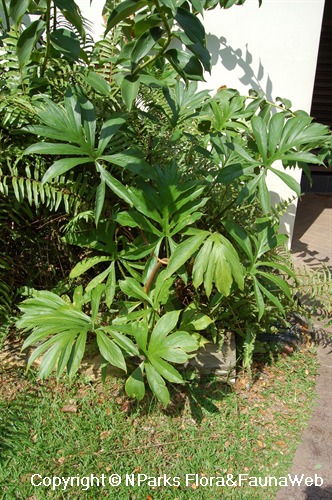
Back
Lasia spinosa (L.) Thwaites
| Family Name: | Araceae |
| Synonyms: | Dracontium spinosum L., Lasia aculeata Lour. |
| Common Name: | Geli-geli, Bekil, Spiny Lasia, 刺芋 |
Name
Classifications and Characteristics
| Plant Division | Angiosperms (Flowering Seed Plants) |
|---|---|
| Plant Growth Form | Aquatic & Hydrophyte, Herbaceous Plant |
| Lifespan (in Singapore) | Perennial |
| Mode of Nutrition | Autotrophic |
| Maximum Height | 1.5 m |
Biogeography
| Native Distribution | India, Sri Lanka, Nepal, Bhutan, Bangladesh, China, Myanmar, Taiwan, Vietnam, Laos, Thailand, Cambodia, Malaysia, Singapore, Indonesia and Papua New Guinea. |
|---|---|
| Native Habitat | Terrestrial (Primary Rainforest, Freshwater Swamp Forest, Riverine), Aquatic (Freshwater Pond / Lake / River) |
| Preferred Climate Zone | Tropical, Sub-Tropical / Monsoonal |
| Local Conservation Status | Native to Singapore (Endangered (EN)) |
Description and Ethnobotany
| Growth Form | It is a large, spiny, marsh plant, up to 1.5 m tall. |
|---|---|
| Foliage | Its alternate, long- and spiky-stalked leaves have broad leaf blades that are arrow-shaped and 20-30 cm long when young. The leaves are divided into 4-8 pairs of lance-shaped lobes up to 4 cm wide when mature. |
| Flowers | Its flowers are borne on a yellow or brown, up to 4 cm long, flowering shoot that is enclosed by a 35-40 cm long, modified leaf (spathe) that is purplish on the outside and greenish inside. |
| Fruit | Its hard, rough surfaced fruits are borne on the axis of the inflorescence. |
| Habitat | It grows along tidal rivers, and in open wet places, and swamp forests. It occurs locally in the Central Catchment Nature Reserve. |
| Associated Fauna | Its flowers are pollinated by insects. |
| Cultivation | It can be propagated by seed or division of the underground stem. Grows best in waterlogged soils that is rich in nutrients. |
| Ethnobotanical Uses | Edible Plant Parts : Edible Leaves Food (Fruit or Vegetable): The peeled leaf stalks (to remove spines) are edible and utilised as a curry flavouring. Medicinal: The leaves are used for treating coughs, stomachaches, and other pains. |
Landscaping Features
| Landscaping | It is suitable for planting on the edges of ponds and water bodies for its attractive inflorescence and leaves. |
|---|---|
| Desirable Plant Features | Ornamental Foliage, Ornamental Flowers |
| Landscape Uses | Riverine, Pond / Lake / River, Marsh / Bog |
Fauna, Pollination and Dispersal
| Pollination Method(s) | Biotic (Fauna) |
|---|---|
| Seed or Spore Dispersal | Abiotic |
Plant Care and Propagation
| Light Preference | Semi-Shade, Full Sun |
|---|---|
| Water Preference | Lots of Water |
| Rootzone Tolerance | Moist Soils, Waterlogged Soils (Drains Site, Does not Drain Site), Fertile Loamy Soils, Heavy Clay Soils |
| Propagation Method | Seed, Division |
Foliar
| Foliage Retention | Evergreen |
|---|---|
| Mature Foliage Colour(s) | Green |
| Mature Foliage Texture(s) | Leathery, Spiny / Bristly / Stinging |
| Foliar Type | Simple / Unifoliate |
| Foliar Arrangement Along Stem | Alternate, Rosulate / Rosette |
| Foliar Attachment to Stem | Petiolate |
| Foliar Shape(s) | Non-Palm Foliage |
| Foliar Margin | Palmately Lobed |
| Leaf Area Index (LAI) for Green Plot Ratio | 3.5 (Shrub & Groundcover - Monocot) |
Floral (Angiosperm)
| Flower & Plant Sexuality | Unisexual Flowers , Monoecious |
| Flower Colour(s) | Cream / Off-White, Green, Purple |
|---|
| Flower Grouping | Cluster / Inflorescence |
| Flower Location | Terminal |
| Inflorescence Type | Spathe & Spadix |
Fruit, Seed and Spore
| Mature Fruit Colour(s) | Green |
|---|---|
| Mature Fruit Texture(s) | Rough |
| Fruit Classification | Simple Fruit |
| Fruit Type |
Image Repository
Others
| Master ID | 892 |
|---|---|
| Species ID | 2186 |
| Flora Disclaimer | The information in this website has been compiled from reliable sources, such as reference works on medicinal plants. It is not a substitute for medical advice or treatment and NParks does not purport to provide any medical advice. Readers should always consult his/her physician before using or consuming a plant for medicinal purposes. |

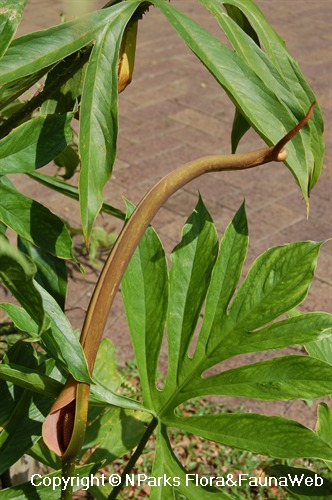
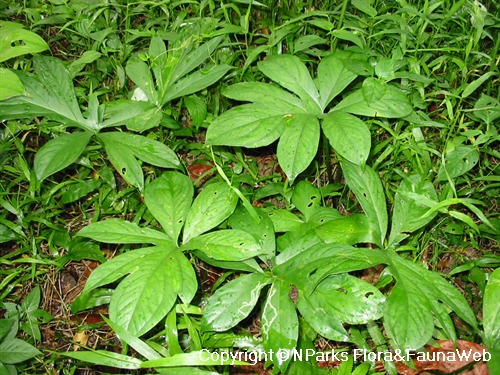

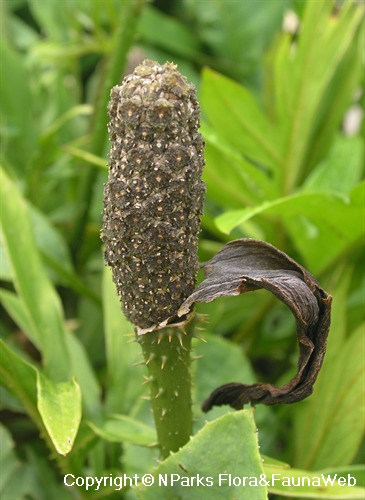
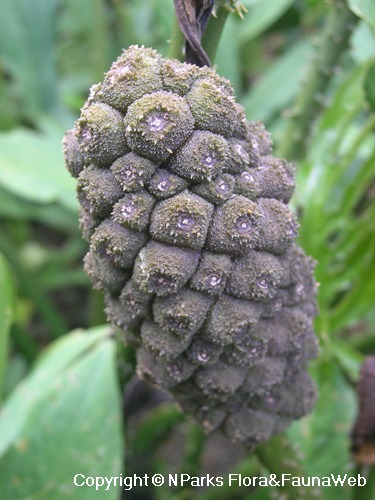

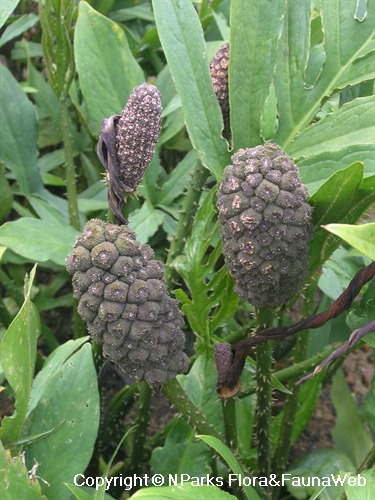
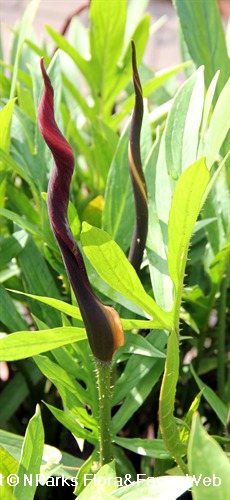
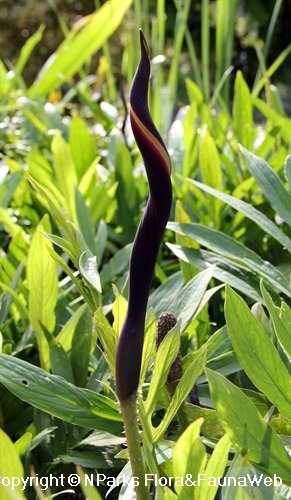
.jpg)
.jpg)
.jpg)